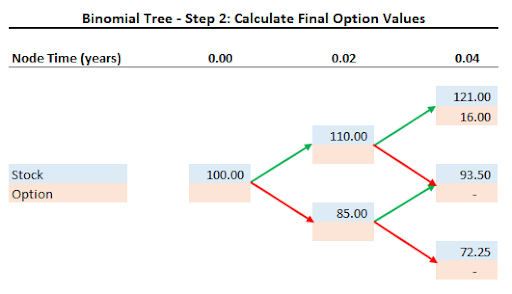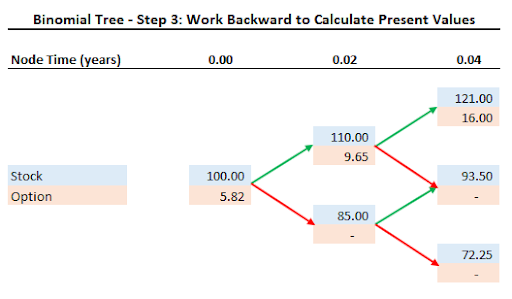The Heston Model: Defined & Explained with Calculations
The Heston model is an options pricing model developed to address some of the shortcomings in the Black-Scholes model when pricing European options. In contrast to the Black-Scholes model, the Heston model uses stochastic, not constant, volatility as a key variable to determine option prices.
Developed by mathematician Steve Heston in 1993, this model is thought to be more real-world in nature since implied volatility percentages change during an option’s life. However, the Heston model is just one of many option valuation techniques to consider.
What Is the Heston Model?
The Heston model is used to gauge the value of options. The main difference between this and other models is how volatility is treated. The Heston model for option pricing assumes that volatility is stochastic, or random. That simply means that volatility is treated as a variable, in contrast to other models that assume constant or local volatility.
Option prices are made up of several variables — often referred to as the Greeks. It is important to understand price inputs in order to know how to trade options. Volatility is a major piece of the price of an option. The higher the implied volatility, the more valuable the option is. The Heston approach accounts for this by assuming there is a relationship between a stock’s price and its volatility.
💡 Quick Tip: In order to profit from purchasing a stock, the price has to rise. But an options trading account offers more flexibility, and an options trader might gain if the price rises or falls. This is a high-risk strategy, and investors can lose money if the trade moves in the wrong direction.
How Does the Heston Model Work?
By assuming that volatility is random, many traders believe the Heston option pricing model works better than the Black-Scholes model since it captures the true nature of volatility. The Heston approach is considered a superior model to the Black-Scholes, too. The downside is that it can be more complicated to calculate. Moreover, it can only be used on European options — those that can be exercised only at expiration.
Like other option pricing models, the Heston method attempts to determine the time value piece of an option’s total value. Intrinsic value is straightforward to figure out since it is just the difference between the stock price and strike price. Intrinsic value and time value comprise an option’s total worth.
Heston Model Pros and Cons
The Heston option pricing model has several advantages and disadvantages. By incorporating variable volatility characteristics, an options trader can have more confidence in the Heston model’s output reflecting observed market behavior versus other valuation techniques. The Heston model achieves increased accuracy by considering correlations between the price of a stock and its volatility. It also assumes that volatility exhibits mean reversion.
Additionally, Heston’s approach yields a closed-form solution that can simplify what is a complex mathematical equation.
The Heston model has its limitations. For one thing, the output is only as good as the variables you assume. This model is also thought to be ill-equipped to price options close to expiration due to instances when implied volatility might be extremely high.
Perhaps the biggest downside is its complexity versus Black Scholes and the binomial options pricing model.
| Pros | Cons |
|---|---|
| Incorporates more realistic market conditions such as changing volatility levels | Only useful on European-style options |
| Prices options considering the price and maturity variables on volatility | Only as good as the inputs used |
| Yields a closed-form solution that can be used to compare an option’s value to its market price | Considered not an accurate gauge to price short-term options with high volatility |
Heston vs Black-Scholes Model
Understanding the differences between the Heston model and the Black-Scholes model can help you determine which might work best when you trade options.
| Heston Model | Black-Scholes Model |
|---|---|
| Assumes that volatility is random | Assumes that volatility is constant |
| Incorporates a relationship between a stock’s price and its volatility | Does not incorporate correlations between a stock’s price and volatility |
| Can be used in a variety of market conditions | Prices options under one set of volatility parameters |
Finally, user-friendly options trading is here.*
Trade options with SoFi Invest on an easy-to-use, intuitively designed online platform.
*Check out the OCC Options Disclosure Document.
Heston Model Formula Explained
The Heston volatility model includes several mathematical inputs. Knowing these can help you find the right strategies for trading options. Understanding the model inside and out can arm you with the quantitative armor other traders might not possess.
Here is the full Heston model formula:

Where:
• St = specific asset price at time t
• r = the risk-free interest rate, often a short-term Treasury rate
• √Vt = volatility (standard deviation) of the asset
• σ = volatility of volatility
• θ = long-run price variance
• k = reversion rate to the long-term price variance
• dt = indefinitely small positive time increment
• W1t = Brownian motion of the asset price
• W2t = Brownian motion of the asset’s price variance
Note that the two Brownian motions are negatively correlated. For example, a drop in the asset price will see an increase in volatility. The two Brownians are related by the following equation:

Where ρ is the correlation.
In his original paper describing this model, Heston provided default parameters for the equations above which include:
• St = 100
• r = 0
• Vt = 0.01
• σ = 0.1
• θ = 0.01
• k = 2
• ρ = 0
• Option maturity = 0.5 year
Further calibration of the model requires advanced mathematical analysis.
Other Option Pricing Models
The Heston option pricing is just one of many approaches to consider. Let’s outline several of the most common methods you might use to price options.
Binomial Model
The binomial model uses an iterative approach using several periods to value American-style options. It follows a binomial pricing tree, which can be useful in illustrating how option prices change from one period to another. This method is considered intuitive and is used more often than Black-Sholes.
Risk-Neutral Probability
The risk-neutral approach to option pricing assumes that risk is not considered. This method can help a trader assess the true value of an option outside of market risk conditions.
Monte Carlo Simulation
Monte Carlo simulations are sometimes used to gauge the value of options. This method utilizes computer simulations to create thousands of potential outcomes. Option values can be calculated based on the probability-weighted computer output.
Monte Carlo simulation is used to generate realistic market conditions which can be useful for options traders as they attempt to assess how an option value will fluctuate over time. However, it can be time-consuming and costly to run these complex programmatic scenarios.
The Takeaway
The Heston model prices options using stochastic (random) volatility to more accurately model options pricing behavior. The more well-known Black-Scholes option pricing model assumes that implied volatility remains constant.
Some traders believe that the Heston model approach works better to incorporate practical, real-world conditions. Still, there are many techniques to price options for you to consider when you trade.
Investors who are ready to try their hand at options trading despite the risks involved, might consider checking out SoFi’s options trading platform offered through SoFi Securities, LLC. The platform’s user-friendly design allows investors to buy put and call options through the mobile app or web platform, and get important metrics like breakeven percentage, maximum profit/loss, and more with the click of a button.
Plus, SoFi offers educational resources — including a step-by-step in-app guide — to help you learn more about options trading. Trading options involves high-risk strategies, and should be undertaken by experienced investors. Currently, investors can not sell options on SoFi Active Invest®.
FAQ
What is the Heston model used for?
The Heston Model is used for pricing European options. It uses stochastic volatility to arrive at pricing outcomes, helping traders value options. If a trader determines that an option is over- or under-valued, they might sell or buy the option, then hold it through expiration or trade out of the position before expiration. It is important to remember that European options, unlike American options, cannot be exercised early.
Is the Heston model better than Black-Scholes?
It’s hard to conclude that the Heston stochastic volatility model is better than the more widely known Black-Scholes model. In contrast to Black-Scholes, the Heston model assumes that volatility can change. The Heston model can be more useful to traders since it assumes implied volatility, an important variable for options pricing, increases as options become more in-the-money or out-of-the-money. While the Heston model is considered to be more accurate, it comes with increased computational complexity or in layman’s terms…it’s slower.
What does stochastic local volatility mean?
Local volatility is a basic application of the Black-Scholes model. It accounts for the requirement to price-in skewness into option values. Stochastic volatility contrasts local volatility in that the former can produce a more real-world forward volatility profile. It’s thought that stochastic volatility can overprice options while local volatility and the Black-Scholes method might underprice options.
Photo credit: iStock/FG Trade
SoFi Invest® INVESTMENTS ARE NOT FDIC INSURED • ARE NOT BANK GUARANTEED • MAY LOSE VALUE
1) Automated Investing and advisory services are provided by SoFi Wealth LLC, an SEC-registered investment adviser (“SoFi Wealth“). Brokerage services are provided to SoFi Wealth LLC by SoFi Securities LLC.
2) Active Investing and brokerage services are provided by SoFi Securities LLC, Member FINRA (www.finra.org)/SIPC(www.sipc.org). Clearing and custody of all securities are provided by APEX Clearing Corporation.
For additional disclosures related to the SoFi Invest platforms described above please visit SoFi.com/legal.
Neither the Investment Advisor Representatives of SoFi Wealth, nor the Registered Representatives of SoFi Securities are compensated for the sale of any product or service sold through any SoFi Invest platform.
Options involve risks, including substantial risk of loss and the possibility an investor may lose the entire amount invested in a short period of time. Before an investor begins trading options they should familiarize themselves with the Characteristics and Risks of Standardized Options . Tax considerations with options transactions are unique, investors should consult with their tax advisor to understand the impact to their taxes.
SOIN0322020
















